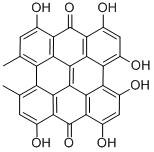gold nanoparticles , Particle size: 10nm, unit:> 0.75a520units/ml, solvent: sodium citrate solution , 7440-57-5
Synonym(s):
Gold;Gold Colloid;AuNP;Gold Powder;Gold/Silica core/shell particles
CAS NO.:7440-57-5
Empirical Formula: Au
Molecular Weight: 196.97
MDL number: MFCD00003436
EINECS: 231-165-9
| Pack Size | Price | Stock | Quantity |
| 1ML | RMB70.40 | In Stock |
|
| 5ML | RMB287.20 | In Stock |
|
| others | Enquire |
PRODUCT Properties
| Melting point: | 1063 °C (lit.) |
| Boiling point: | 2808 °C (lit.) |
| Density | 19.3 g/mL at 25 °C (lit.) |
| refractive index | n |
| Flash point: | 4 °C |
| storage temp. | 2-8°C |
| solubility | H2O: soluble |
| form | wire |
| color | purple |
| Specific Gravity | 19.3 |
| PH | 6-8 |
| PH Range | 6 - 8 |
| Resistivity | 2.05 μΩ-cm, 0°C |
| Water Solubility | Soluble in hot sulfuric acid and aqua regia. Insoluble in water and acid. |
| Sensitive | Light Sensitive |
| λmax | 980 nm |
| Merck | 13,4529 |
| Exposure limits | NIOSH: IDLH 25 mg/m3 |
| Stability: | Stable. May react with halogens, strong oxidizing agents, ammonia, hydrogen peroxide. Reaction with ammonia or hydrogen peroxide may form explosive materials. |
| CAS DataBase Reference | 7440-57-5(CAS DataBase Reference) |
| EPA Substance Registry System | Gold (7440-57-5) |
| Absorption | 1 at 523nm |
Description and Uses
Metallic gold is virtually insoluble, except in aqua regia. Gold exists in three primary forms, elemental, Au (I), and Au (III). As a precious metal, it is resistant to ionization and generally considered biologically benign in its elemental state.
Gold is not permitted for use in foods, drugs or cosmetics as a coloring agent in the U.S. However, surface decoration of foods under conditions which preclude consumption is not considered to be a food use and is, therefore, exempt from regulations concerning food use. The use of gold in the decoration of food is more popular in Europe, where, probably as the result of its limited use, its use has been accepted.
Gold’s chemical and physical properties make it a very versatile element. Its noncorrosivenature provides protection as plating for other metals. Its malleability and ductile qualities meanit can be formed into many shapes, including very thin sheets (gold leaf) and very thin golddiode wires. Gold has the ability to carry electricity with little resistance, making it an excellentcomponent for all kinds of electronic equipment. Gold leaf finds many uses in surgery,space vehicles, and works of art. Gold electronic switches do not create a dangerous spark whenengaged, and they last for a long time. The element’s reflective surface provides protection frominfrared heat radiation as a coating on the visors of aerospace personnel, as well as on large windowexpanses in buildings. Its color and durability make it a major metal for the jewelry industry.Gold has been used to replace teeth for many ages, and the teeth usually last longer than theperson wearing them. Gold is also the worldwide monetary standard, although the United Statesabandoned the gold standard in the 1930s. Even so, gold is still traded as a commodity. Smallamounts of other metals are added to gold coinage for hardening purposes so that the coins willnot wear out with use. Gold bars (bullion) are stored in the treasuries of most countries. Somecountries maintain huge stockpiles of gold for both monetary and industrial uses.
Two forms of gold provide medical treatments. The radioactive isotope Au-198, with a shorthalf-life of 2.7 days, is used to treat cancer and is produced by subjecting pure gold to neutronswithin a nuclear reactor.
Safety
| Symbol(GHS) |    GHS03,GHS07,GHS08 |
| Signal word | Warning |
| Hazard statements | H412 |
| Precautionary statements | P273-P501 |
| Hazard Codes | Xi,Xn,F,C |
| Risk Statements | 36/38-43-67-65-63-48/20-38-11-34-23-52/53 |
| Safety Statements | 26-36/37/39-45-62-36/37-61-23 |
| RIDADR | UN 1789 8/PG 3 |
| WGK Germany | 3 |
| RTECS | MD5420000 |
| TSCA | Yes |
| HS Code | 3822 00 00 |
| HazardClass | 6.1 |
| PackingGroup | II |
| Hazardous Substances Data | 7440-57-5(Hazardous Substances Data) |




